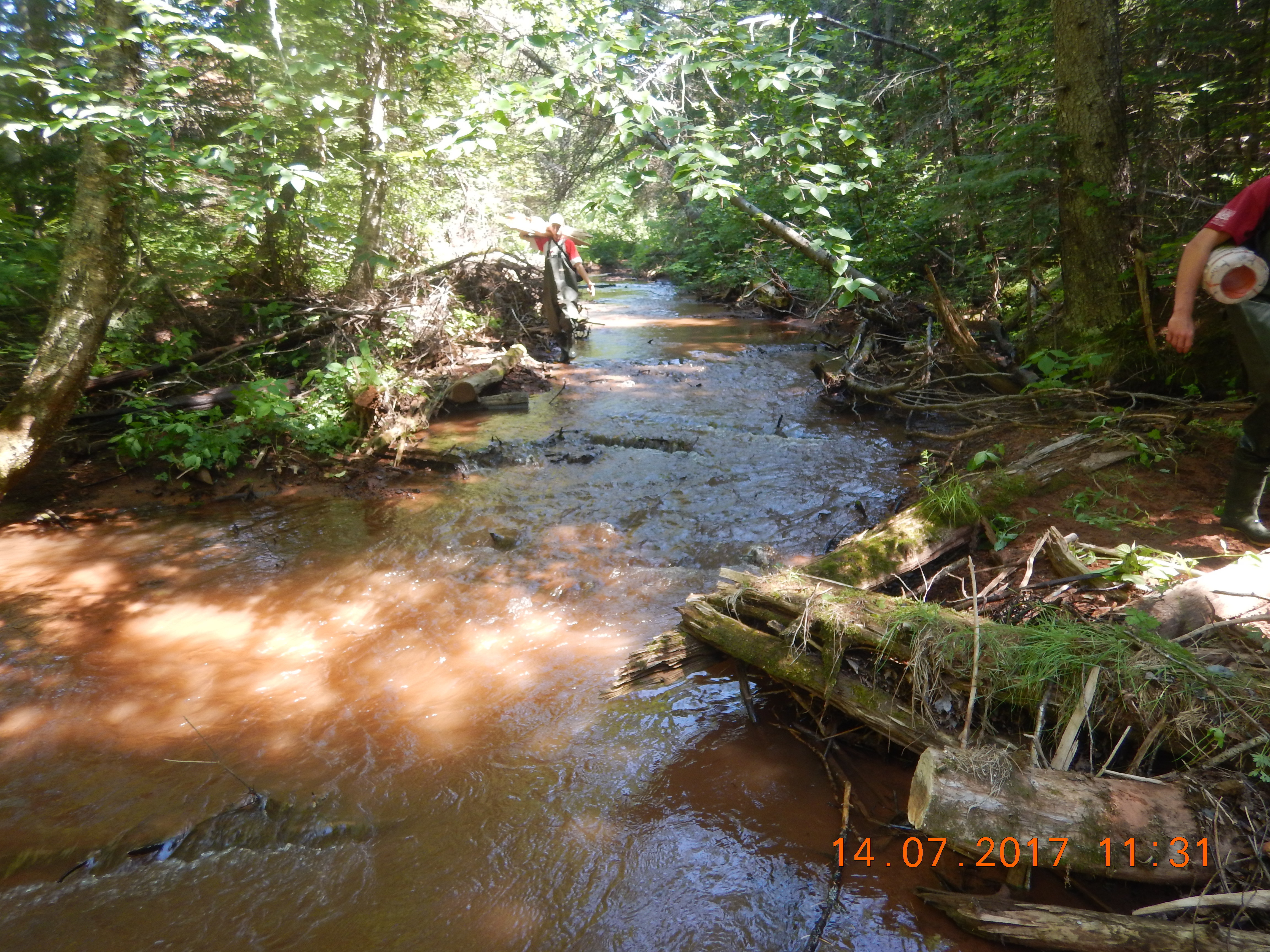Central Queens Wildlife Federation
January 22, 2018 Many of the projects our partners undertake to help the Atlantic salmon involve working to restore habitat and improve conditions.
Many of the projects our partners undertake to help the Atlantic salmon involve working to restore habitat and improve conditions.
This holds true for the Central Queens Branch of the PEI Wildlife Federation (CQWF).
Thanks to grant funding of $25,300 in 2017, the group focused its efforts on the West and Clyde Rivers. The Clyde River is a sub-watershed of the West River. The project involves restoring degraded fish habitat and surrounding riparian area mainly by using intensive restoration techniques and encouraging good landowner stewardship in the upland areas of the watershed.
The overall goal is to restore the river and surrounding environment back to a former state where a sustainable and an abundant population of Atlantic salmon and brook trout can thrive.
“We began working with the ASCF in 2011, and since then we’ve made incredible progress,” said the group’s Jordan Condon. “Since then, we’ve been actively working to remove large amounts of legacy sediment from critical habitat areas and the headwaters region. Identified salmon spawning areas is one critical habitat component. To enhance these areas we’ll manually rake the gravel and cobble spawning substrate clean of silts and/or use brushmats and sediment traps to directly remove the sediments from the river.”
Condon notes the sediment issue on the West River is their biggest limiting factor, so managing the legacy sediment, and upland point sources of sediment is vital to their watershed efforts.
“Our watershed group is just beginning to see encouraging fish stock returns over the past two years. Progress is being made, but there is still lots of work left to be done!” There has been lots of work completed at the three major tributaries – Quinn’s, Howell’s, and Skye Brook – and at the Brookvale headwaters region. “For future years, our efforts will be focused on the last remaining sections of river that have not received any restoration activities yet, maintenance on already cleared sections, expanding our efforts on critical hotspots components (spawning areas or juvenile habitat), working with the local residents/community to involve them in the process as much as possible, and also to encourage the young and old to get out angling.”
